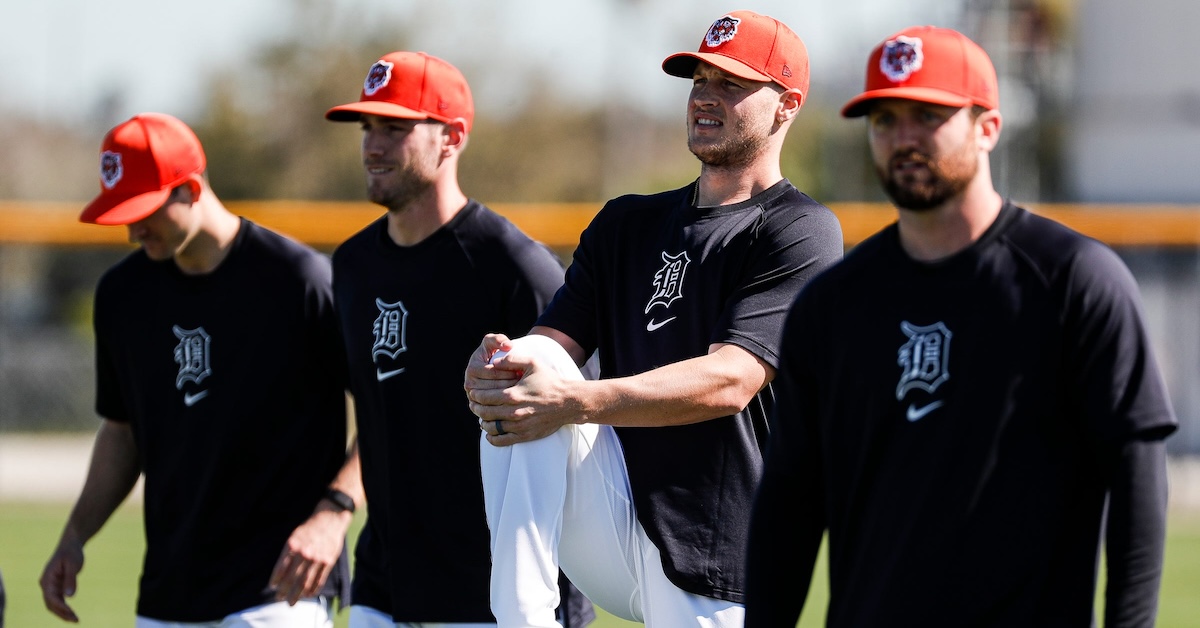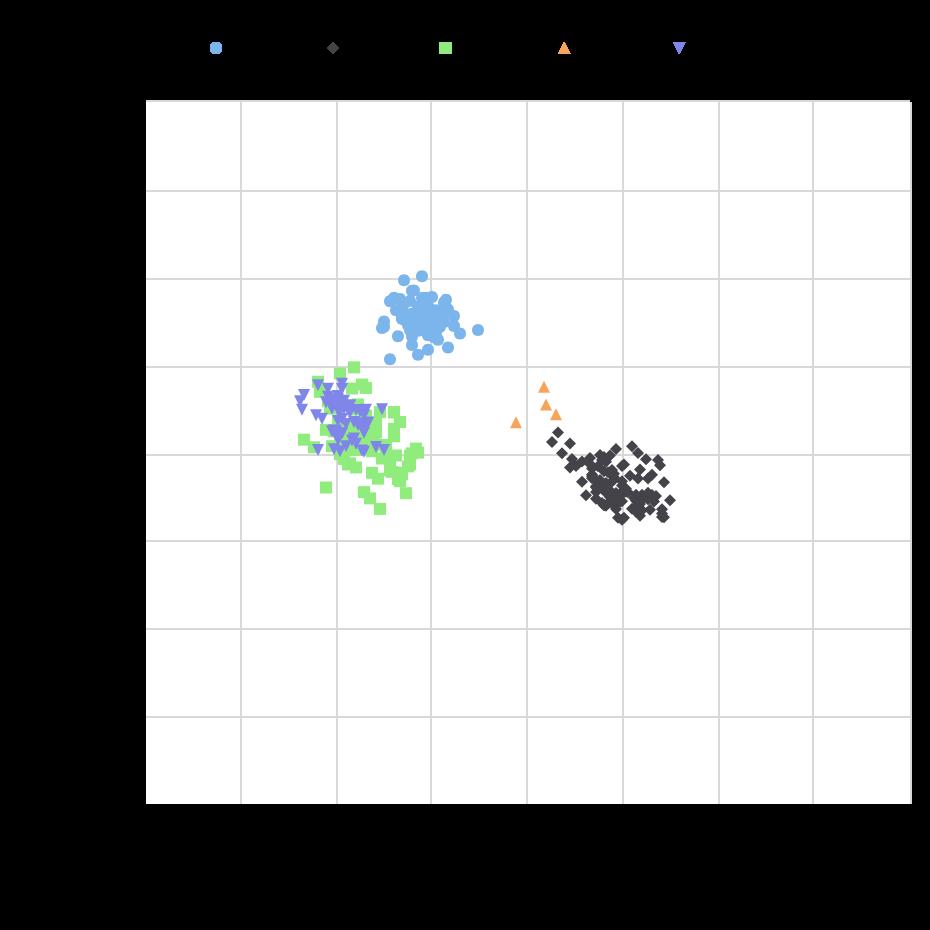
Junfu Han/USA TODAY NETWORK
A funny thing happened in Detroit towards the end of the 2023 season: In September, the Tigers were tied with the Minnesota Twins for the best record in the American League. Tarik Skubal’s breakout and Spencer Torkelson’s second-half rampage helped them finish second in the AL Central, albeit nine games behind Minnesota. You may remember the excitement surrounding the team after their hot finish to the 2021 season and subsequent spending spree in free agency. With that false start in mind, it’s wise not to read too much into the final month of the 2023 season, but it does seem like the organization has actually progressed towards breaking out of their rebuilding phase.
The area where that progress is most evident is in the unit that trotted out 17 different starting pitchers last season. The pitcher who made the second-most starts on the team, Joey Wentz, threw 80.1 innings and accumulated -0.4 WAR in the rotation. Being able to churn through so many pitchers is both a blessing and a curse for a rebuilding franchise. The whole point of giving so many players a chance to stick in the big leagues is to sort the wheat from the chaff. This spring, there has been a heated competition for the fourth and fifth spot in the rotation, and it looks like there should be a surprising amount of depth behind Detroit’s front five.
Skubal rightfully garners most of the headlines, and Detroit signed veterans Kenta Maeda and Jack Flaherty to short-term contracts this offseason to replace Eduardo Rodriguez and Michael Lorenzen. Behind that trio are a number of young pitchers who each have interesting characteristics and could possibly be next in line to break out. Here’s how our Depth Charts see the Tigers rotation right now:
Tigers Rotation, Depth Charts Projection
| Player |
IP |
ERA |
FIP |
WAR |
| Tarik Skubal |
158 |
3.47 |
3.36 |
3.7 |
| Jack Flaherty |
153 |
4.46 |
4.44 |
1.5 |
| Kenta Maeda |
123 |
4.29 |
4.17 |
1.7 |
| Reese Olson |
127 |
4.28 |
4.27 |
1.6 |
| Matt Manning |
116 |
4.68 |
4.69 |
1.1 |
| Casey Mize |
112 |
4.62 |
4.66 |
0.9 |
| Sawyer Gipson-Long |
35 |
4.17 |
4.11 |
0.5 |
| Ty Madden |
17 |
4.47 |
4.53 |
0.2 |
| Joey Wentz |
8 |
4.51 |
4.45 |
0.1 |
| Wilmer Flores |
8 |
4.31 |
4.31 |
0.1 |
| Total |
856 |
4.27 |
4.23 |
11.3 |
The projections are pretty bearish on Detroit’s starters as a unit. Their combined 11.3 projected WAR ranks 22nd in the majors, with Skubal looking like the only standout contributor. As you might have guessed, I’m a little more optimistic about this group’s potential.
Yesterday, Chris Gilligan examined what we can learn about pitchers who are throwing harder this spring (with the necessary caveats that we’re obviously working with extremely small samples and that the majority of the spring training facilities in Arizona aren’t generating public Statcast data). The leaderboard he included in his article was littered with Detroit pitchers:
Spring Velocity Increasers
| Player |
2023 |
2024 |
Increase |
| Matt Manning |
93.3 |
95.4 |
2.1 |
| Casey Mize |
93.4* |
95.5 |
2.1 |
| Tarik Skubal |
95.8 |
97.5 |
1.7 |
| Jack Flaherty |
93.1 |
94.7 |
1.6 |
| Joey Wentz |
93.4 |
94.4 |
1.0 |
*2022 data
Of the 13 starters listed in Chris’ article who are enjoying a fastball velocity jump of at least 1 mph, four were Tigers and there’s a fifth if you include Casey Mize. What’s more encouraging is that for pitchers who increase their fastball velocity over 95 mph, the benefits seem to be greater. Chris found that pitchers who cross that threshold can expect wOBA improvement during the regular season, while the results are a little muddier for pitchers below that threshold.
That’s good news for Flaherty, who is trying to regain the early career effectiveness that made him such a standout in St. Louis. The best season of his career came in 2019, when he accumulated 4.7 WAR; that also happens to be the year when he had the highest average fastball velocity of his career at 94.3 mph. He’s also gained a couple of inches of ride on his heater this spring and some additional arm-side movement to boot. All three of those increases are a continuation of a trend that was started when he joined the Orioles last summer:
Jack Flaherty, Fastball Characteristics
| Year |
Velocity |
V Mov |
H Mov |
| 2024 (Spring Training) |
94.7 |
16.1 |
5.4 |
| 2023 (Baltimore) |
93.6 |
14.2 |
3.4 |
| 2023 (St. Louis) |
92.9 |
13.1 |
1.9 |
This spring, the shape of his fastball closely resembles what it looked like back in 2020, except he’s added an inch of ride and an extra tick of velocity. During that shortened season, opposing batters whiffed nearly a quarter of the time they offered at his heater, which bodes well for the pitch’s potential effectiveness this year. Flaherty’s slider also looks livelier this spring, with an additional two ticks of velocity over what he was averaging last year. That pitch is perhaps more important to his overall success than his fastball; last year, the whiff rate on his slider dipped to 26.5%, a career low for him. Simply adding velocity to his slider isn’t necessarily a panacea for his woes — other sliders with a shape similar to his actually performed better when thrown at slower velocities last year — so it’ll be interesting to see if this harder version of his gyro slider helps or hurts him.
While it’s way too early to draw any definitive conclusions from Flaherty’s spring training pitch data, the fact that he’s throwing harder than ever hopefully indicates that he’s returned to full health after dealing with some shoulder troubles over the last three years. The same could be said for Matt Manning and Mize. The former has dealt with forearm and shoulder injuries over the last few years while the latter is coming off Tommy John surgery. To see them throwing harder than ever is certainly a promising sign. Manning’s fastball looks like it has the same shape as it’s had in the past, though with an extra couple of ticks of velocity. Meanwhile, along with the boost in velocity, Mize’s heater looks like it has an extra couple of inches of ride and a little less cut to it.
With so many of their pitchers carrying injury concerns into the season — Skubal is less than a year removed from a flexor tendon injury and Maeda hasn’t thrown more than 106.1 innings in a season since 2019 — the Tigers will likely need all the depth they can muster this year. The pitcher with the second-best projection above, Sawyer Gipson-Long, is likely on the outside looking in at the Opening Day rotation due to a groin injury that has delayed his spring start. Acquired in 2022 for Michael Fulmer, Gipson-Long made his major league debut towards the end of last year, making four excellent starts for Detroit in September. Ranked 16th on their most recent organizational prospect list, he doesn’t have the prospect pedigree of Manning or Mize, but he showed some promise during his short cup of coffee.
Gipson-Long’s calling cards are his secondary offerings, specifically his slider and changeup. Both of those pitches ran whiff rates over 40% and made up more than half his pitch mix. His changeup in particular was an outstanding offering; batters managed an expected wOBA on contact of just .222 to go along with a whiff rate right at 50%. The pitch grades out 25% better than a league average changeup per Stuff+ and is a perfect mirror of his sinker — it just comes in six ticks slower:

Of his two fastballs, his sinker looks like the more effective weapon, though he used it exclusively against right-handed batters last year. Because it plays so well off his changeup, Gipson-Long gains a ton of deception with that pitch. His low-three-quarters arm slot imparts a ton of natural run and sink to his pitches, which is why his four-seam fastball doesn’t grade out as well, though it’s useful to have as a primary pitch against opposite-handed batters.
The reason Gipson-Long isn’t more highly thought of is because his command isn’t as good as his excellent minor league walk might indicate. He controls the strike zone well, but he doesn’t have precise command of his pitches to avoid mistakes over the heart of the plate. His excellent stuff should help him overcome some of those mistakes, but it does present some risk to his profile. Once healthy, he should be one of the first pitchers called up should the Tigers need reinforcements.
It doesn’t sound like Detroit has an appetite for a six-man rotation to start the season, which means one of Manning, Mize, or Reese Olson could start the year either in the bullpen or in the minors. With Gipson-Long waiting in the wings and a host of other spot starters like Wentz and Alex Faedo on the 40-man roster, the Tigers have the luxury of bringing some of their top pitching prospects along slowly. Wilmer Flores and Ty Madden both reached Double-A last year and look like they’re on the fast track to the majors, and the Tigers’ top pitching prospect, Jackson Jobe, isn’t that far behind. With the depth the team has established, Detroit can really give that trio of young pitchers all the development time they need when they’d otherwise be lined up to make their debuts this year.
With less than a month until Opening Day and starters still ramping up their workloads in spring training, the velocity increases we’ve seen from the Tigers camp should be monitored closely. If Skubal, Flaherty, Manning, and Mize can all carry their gains over into the regular season, it should give them a much higher ceiling than what the projections are calling for. And should any of their staff succumb to injury, it looks like the Tigers have the depth to cover for any in-season attrition with another wave of strong pitching prospects on the way. It’s taken them a while, but the strength of their starting rotation should give fans in Detroit something to be optimistic about as they head into the regular season.
Source
https://blogs.fangraphs.com/the-tigers-rotation-is-suddenly-flush-with-options/
 Backyard GrillingWeekend WarriorsAdvice from DadBeard GroomingTV Shows for Guys4x4 Off-Road CarsMens FashionSports NewsAncient Archeology World NewsPrivacy PolicyTerms And Conditions
Backyard GrillingWeekend WarriorsAdvice from DadBeard GroomingTV Shows for Guys4x4 Off-Road CarsMens FashionSports NewsAncient Archeology World NewsPrivacy PolicyTerms And Conditions
